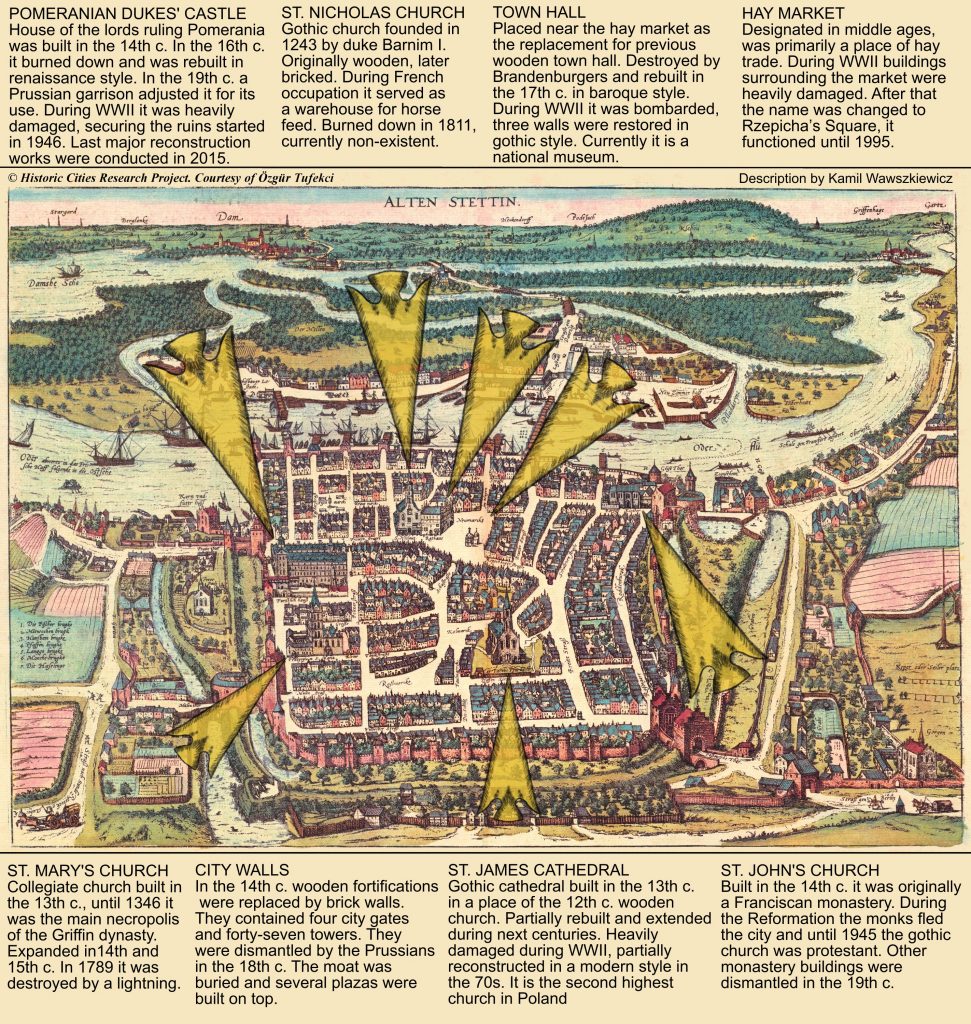
Stettin was originally a Slavic stronghold founded on the left bank of the Oder River, about 150km north-east of Berlin. The oldest traces of the settlement are dated back to the late 9th century. The population was pagan, out of four temples the most important one was the temple of Triglav. From 12th to 17th c. Stettin was ruled by the House of Griffins. The first Christian temple build in the settlement was the church of St. Peter and Paul. In 1243 Barnim I, Duke of Pomerania presented Stettin with town privileges. The original wooden fortifications were replaced by sturdier stone or brick walls in the 14th and 15th century.
Stettin, like most marine cities was focused on trade. It started by allowing inland settlements to sell their goods to foreign merchants and vice versa. With the growth of prestige and wealth the range of the trade could be expanded. In the late 13th c. Hanseatic League established an agency in Stettin. The city traded mainly with Denmark, Magdeburg and Poland. Polish king Władysław II Jagiełło granted the city trade privileges in 1390, Stettin became one of the main export routes from Poland.
The attached map is dated to 1588, when the first edition of Civitates Orbis Terrarum was released. The 16th c. was a time of changes for the city. The decline of Hanseatic League in the region caused by growth of English and Dutch merchants forced the city to become more self-sustaining. Agricultural and forest industry flourished, soon Stettin did not have to import raw food. It actually become one of the biggest exporters of food in Pomerania. Since the end of the 15th c. it was a capital of the Duchy of Pomerania. Increasing prestige of the city attracted many craftsmen, numerous guilds were established as the result. Neighbouring settlements, such as Gartz, Greifenberg and Stargard supplied the city with raw resources and brought back craft products, sea fish and imported goods like cloth. Stettin had a dockyard but it constructed ships mainly for local merchants, selling new units to foreigners was forbidden by law.
In the 16th c. the size of the city did not change much. The main settlement was still contained in medieval walls, although the agglomeration included also three minor settlements. Total population probably oscillated about 17 000 people. One of the most notable changes was reformation. Duchy of Pomerania became protestant which resulted in expulsion of the monks from the city.
Kamil Wawszkiewicz tutored by Dr Natalia Bursiewicz
